Shade Plants for Problem Landscape

Home improvement is a never ending process, especially the yard and landscaping. There always seems to be something added to the to-do list. Recently we started a Curb Side Appeal project, that began as a weekend project, and quickly became a little longer. Today we are sharing the first of the landscape plantings in our problem landscape with shade plants.
Click here for your FREE garden and landscape journal- the first step to gardening success!
Having a husband who knows how to create gorgeous landscape is definitely a blessing. We first shared our plans for our Curb Side Appeal with you a few weeks back when we still had snow on the ground. The area closest to the street has always been a bit of an eye sore. There are two large trees that keep the area very shaded, so it’s been difficult to grow grass and plants. So we decided to take a step back, start all over and do it the right way, from the beginning.
First, all the grass and weeds were removed, then Doug put it the Stone Walkway. Next it was time for the plants and mulch, but not just any plants would work, we needed to find shade loving plants. Later this week, we have sod coming not only for around the new landscape beds, but also the whole front yard. I can hardly wait to run around in beautiful, soft grass for a change. We will be sharing the whole process with you, and giving you tips on what we do, but for now, let’s get these plants in the ground.
Choosing the plants that will go into your landscape is all about location, location, location. In general all plants fit into three basic categories when you consider the most influential characteristic. These are broken down by the amount of sun a plant needs to produce it’s food (i.e. photosynthesis) and thrive. The categories are full sun, part sun/part shade and shade or to give you a better understanding let’s break it down using the amount of sun your location will receive in hours during the day.
- Full Sun – 8+ hours
- Part Sun/Part Shade – 3 to 6 hours
- Full Shade – less than 3 hours
As you can imagine a landscape that is situated in full shade can limit the choices you have, and as a result you should use other means such as selective pruning or thinning of the upper branches of any trees that interfere to provide at least 3 hours of daily sunlight, even if the result is filtered sunlight. At least you’ll have more choices to choose from.
There are plants that are suited to every landscape and while sunlight is the most important characteristic to consider another characteristic to take into account for a shade garden are the tree roots. I know most people would not consider this but there are two reasons to take this into account. First the ease at which you can plant and second, limiting the damage and stress on the trees you are planting around. Perennials are the best and most abundant choice for this, their relatively shallow roots work well in these situations.
Perennials to Plant in the Shade
- Hostas – There are 100’s of Hostas to choose from and very well may be the most common perennials planted in shaded landscapes. There is surely one for every concievable situation and personal taste. From the tiniest that grows no larger than 4 inches to the mammoth ones that can stand three to four feet tall and cover an area larger than you can spread your arms when mature. We found two at Walmart that work well in our landscape, Gold Standard (pictured) and Fortunei Aureo Marginata, they were less than $3.50.
- Sedges – While not normally the first plant to add to a shade garden it works well if you have the right conditions. It likes wetter soil and should be placed where you get the longest amount of daylight. It is especially well suited for areas that get midday sun. Our choice for this project was Carex Evergold.
- Heuchera (Coral Bells) – Another plant choice that does well in areas of your landscape that may get more than 3 hours of sunlight. Their airy flower stems work well to highlight the large leaves of the Hostas. Your choices are as numerous as Hostas, I prefer using varieties that have burgundy foiliage, we were able to find Stormy Seas at our local Walmart.
- Shade Garden Mix Consisting of a Hosta, Ajuga and Lamium – If you’re just starting out, this combination of plants that are suited to shade gardens is something you must try. These were sold in a pack of 3 making them a perfect combination at less than $11.00.
- Corkscrew Rush – Grasses are the one species that are the least suited to be planted in shade, and while rush is not a grass it can work in your landscape to provide the texture and appearance of grass. There are very few choices of Rush that get much taller than 12 inches so when I was able to find this Big Twister variety I knew it was destine for our landscape.
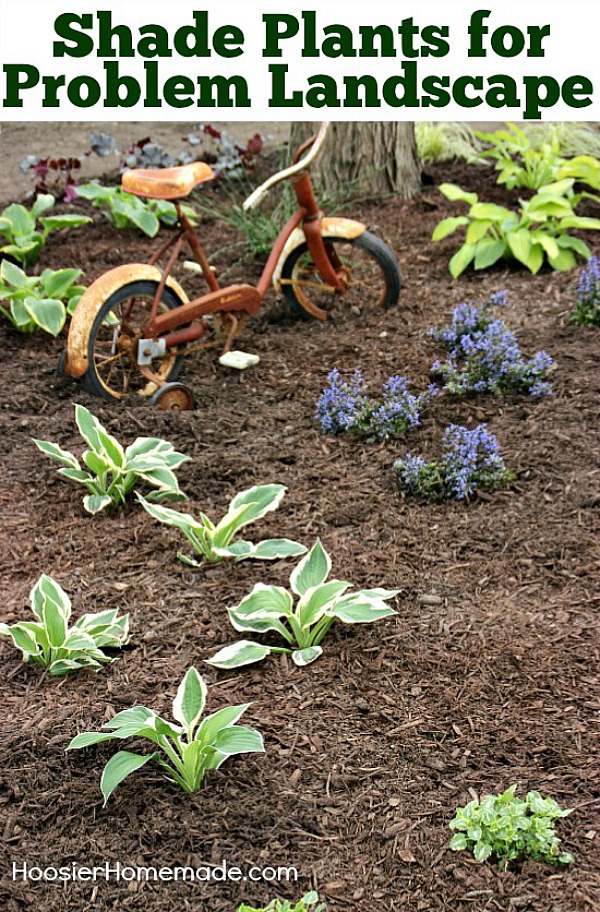
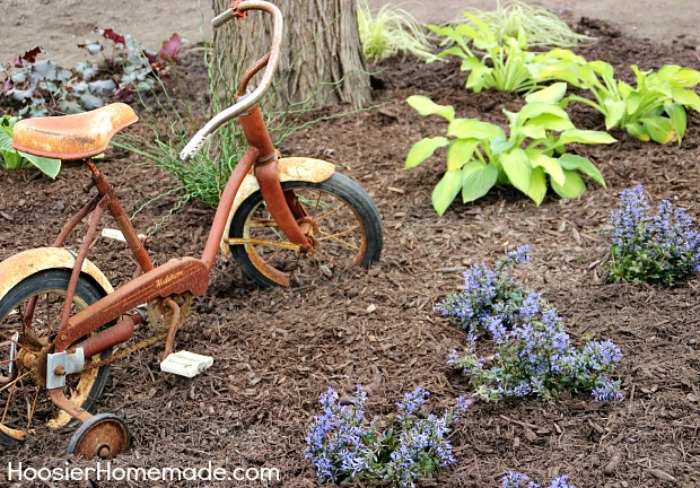
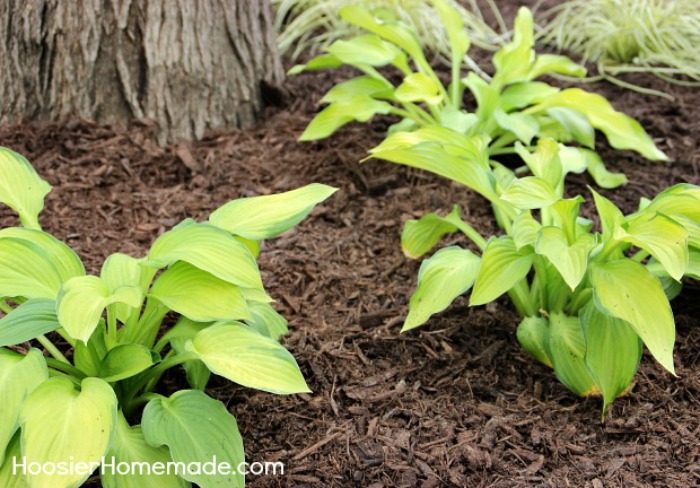
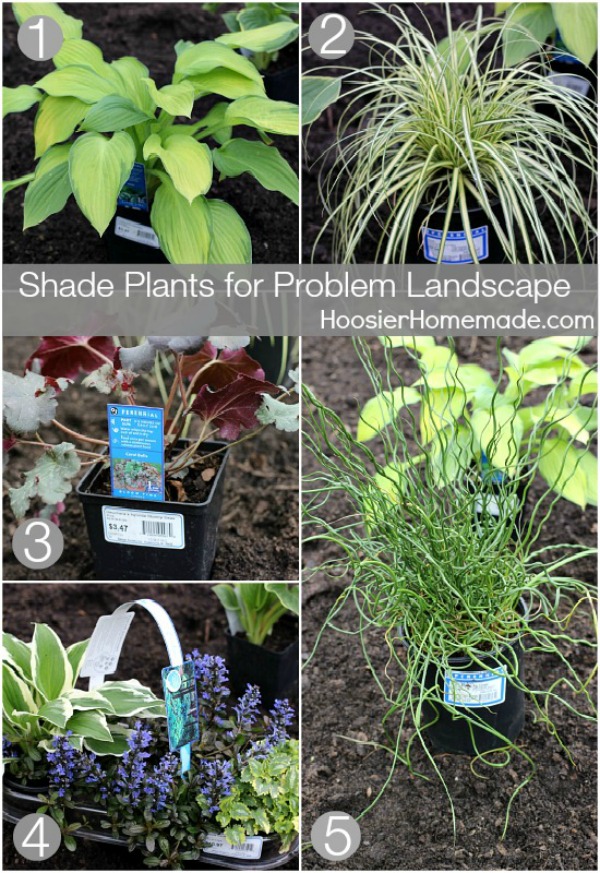

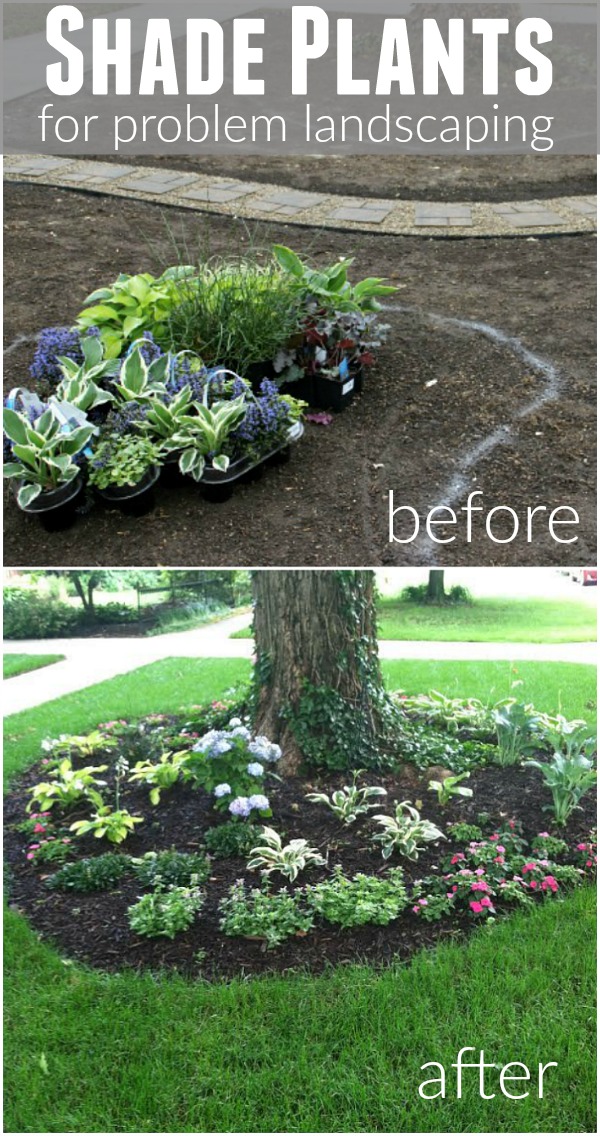
We have these things called deer that eat the hostas like a salad. All I need to do is plant some tomatoes and cucumbers and they’ll be set. They stand right in the yard, beside the porch munching on them looking at us as they do it as I’m stomping my foot yelling at them. I swear I think they’ve spent too much time with the cows!!!
Oh yes, I know deer can be desructive sometimes. There is spray that you can get for plants that deter them from eating, and it’s okay for the plants.
-Liz
I’ve used irish spring soap bars cut in 3, wrapped in old panty hose and hung on bamboo stakes placed about every 3 feet and haven’t had any issues with deer. The year before, the deers cleared out every flower head on my beds and baskets.
I too had voles till someone told me if I get rid of the grubs I will get rid of the voles. You can buy the bag of Grub killer in Walmart it works. No more voles
Awesome tip- thank you!
My mom and I have a slight obsession with collecting different hostas and heucheras. Unfortunately at my current home in Texas, these plants don’t do too well. Not much shade to come by here 😉 Thank you for sharing at Merry Monday!
I love a hosta! Thanks for hosting!
I had a hosta bed of 20 or more last summer and when fall came ,something called a voile ate all the roots . I am sick! Have you ever dealt with them and any suggestions on how to get rid of them?? Needless to say I am replacing and declaring War! Let me know if you have any ideas. Thank you. Brenda
After a little research the best idea I found was planting the hostas in metal baskets- the roots can go through but the voles can’t! Here is a link to the article: https://www.tristatehosta.org/info/voles-baskets.htm
Can I please be put on your site by e-mail? Thanks
Hi Mary, you can sign up for the newsletter here > https://hoosierhomemade.com/newsletters/
~Liz
Wonderful to find a site where projects are shared so completely,Thanks!